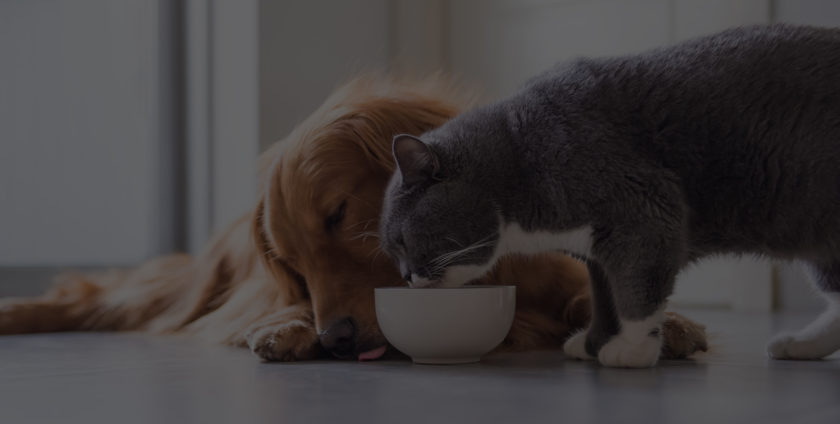Introducing new food to your pet

There are any number of reasons you may need to transition your cat or dog’s food. Regardless of your why, it’s important to follow the how.
Digestive tracts are home to a collection of bacteria and other microbes that work together to make form a microbiome . This is true both for us, as well as for our pets. These gut bacteria are necessary, aiding with digestion and ensuring that proper nutrients get absorbed. We need these bacteria. But sometimes things go a little wonky (the technical term is it enters a state of unbalance or dysbiosis). Like when we introduce our pet to a new food.
Despite their proclivity to dumpster dive, dogs have sensitive stomachs. The same holds true for cats. And changing their food abruptly can result in stomach upset, vomiting, diarrhea and lethargy. Why does this happen? This goes back to dysbiosis: an abrupt change in food can disrupt the balance of the good gut bacteria – different foods need different bacteria to help them digest, so if your new food have a different ingredient, your pet’s stomach may not be prepped.
While it’s always important to follow the signs of your pet, a general breakdown of food transition is:
Days 1-3 10-20% new food mixed with 80-90% of their existing food
Days 4-5 30-40% new food with 60-70% existing food
Days 6-7 80-90% new food with 10-20% existing food
Days 8+ 100% new food
If at any time your pet shows signs of stomach upset, reduce the amount of new food in the ration, and continue the transition more slowly. If you have to change your pet’s food abruptly and/or they are experiencing signs of acute stomach upset, contact your vet immediately – they may have an allergy to the food or there may be an underlying medical condition.
It’s always easier to maintain a healthy microbiome than it is to restore it. So, if you’re introducing new food, do so slowly – the process should take between a week and ten days (see our sample schedule below). Introducing probitoics and postbiotics (next-generation probiotics) supplements are a great way to help your pet during this time. This is because these supplements work to improve and strengthen the number of good bacteria in the microbiome, allowing pets to handle stressors – like food change – better.
Each of our products feature our proprietary La21,which has been tailored to promote the amount of postbiotics (which we call proteobiotics) faster, helping to build a strong and healthy microbiome, better prepared to handle times of upset or transition. For pets in distress, our Ygia 14 and Ygia Feline include a blend of La21 and our proteobiotic to quickly rebalance gut functioning and restore health.
We know that you’re always looking out for your pet. Help them transition to new food better with Ygia – the next-generation of pet probiotics.